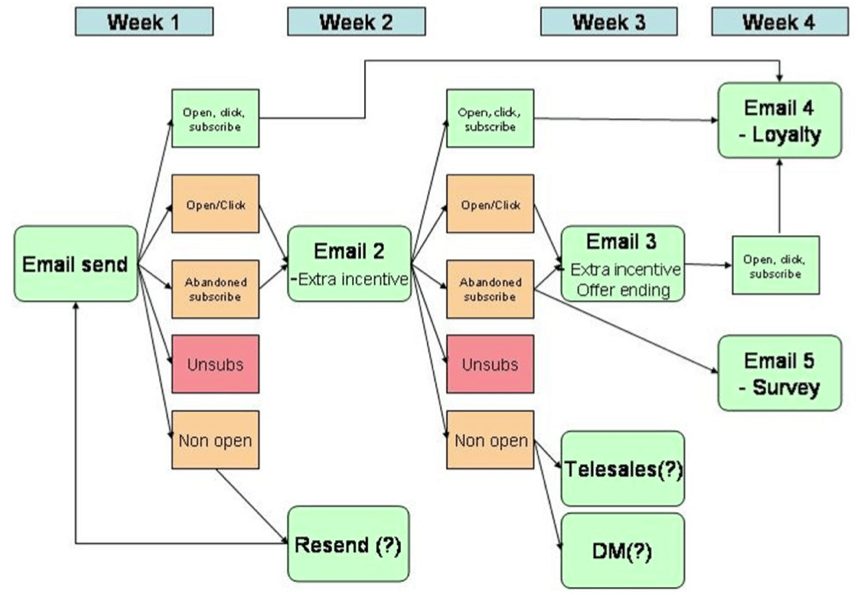No pain. No gain... Take time out to create an effective contact management plan
From working in different sizes of organisations, it is clear that ‘Contact Management Strategy’ is still an unmet aspiration, often accompanied by other buzzwords like ‘Channel Strategy”, “Multi-Channel Strategy” and “Customer Journey Mapping”.
Why solid contact management plans are needed
plans are needed
From what I see, it’s questionable if the planning or implementation of contact management is as effective it could or should be across many organisations. It seems that while the need is recognised, time is not set aside to create a contact management plan, integrated across customer touchpoints. In this post, I'll reference what is needed, that is, to create a framework and planning tool to plan and roll-out the communication strategy, aligned to the business goals which may include conversion, gaining more customer insight, optimise customer engagement and relationship building, improve service, retention, up-sell or cross-sell opportunities.
We all know it helps companies to identify how to best interact with their prospects or customers at each touchpoint with their organisation, to add value to improve the customer experience and relationship. Sometimes this will be defined in a single channel, for example in this post Dave Chaffey shows how to create an effective email marketing contact plan with examples such as this of how direct mail or telesales can be integrated dependent on response.

However, care needs to be taken since the opportunities of integration are often missed. If different teams are working independently considering one channel in isolation can be damaging to your brand and customer relationship by creating inconsistency. Do not focus your contact plan solely on one channel such as email marketing or purely broadcast messages.
It can be damaging and annoy your customers, especially if the message is not relevant or reaches only a small proportion of your customers - as data quality is poor, for example, 5% of your customers may have mobile numbers, or 10% open your emails. Consider a multi-channel approach.
Another tip, is to use customer insight which is available to you as it will help enormously with your communications planning. I recently read an article in the Research Magazine by Richard Evensen from Forrester Research about optimising the customer experience and the use of research, and he summed it up nicely: "...find ways to integrate your insights. Then deliver customer profiles and segmentation that provide a deep understanding of what customers think, feel and do".
Questions to ask during the research and planning stage
Ask yourself, or if you work in a larger company, your Customer Insight Team or a working party focusing on contact management, these practical questions or to provide you with the data, to remain customer-centric and take it back to basics:
- What is their purchase journey across channels? Have we defined it?
- Is the information in the communication relevant to everyone or do we need to segment our customer communications?
- Where and when during the customer lifecycle/ buying cycle do they contact us and vice versa?
- What information do our customers need when they contact us?
- Is there any legal information which we have to send them out as part of our operational or professional legal guidelines (depends on industry if FSA)?
- How will they contact us (channels), and like us to respond; different according to our segments or personas?
- When will it add value to provide extra information, to ultimately persuade them to choose your products or services?
- As an organisation, when is it the right time to engage with them to help with your business goals – nurturing to drive conversion, retention for lapsed or abandoned customers, upsell or cross-sell more products or services?
Bearing in mind, there has to be a cut-off to the number of contacts, so don't over communicate and ensure it's relevant! Your Content marketing strategy is vital. Use Customer Insight or industry benchmarking to identify this.
So where do you start, when you are planning your contact strategy?
From my experience, there are different approaches to this and I’m sure the list is not exhaustive.
The ideal scenario is to plan an integrated approach with a team of key stakeholders. Some companies plan independently and focus individually on a separate strategy for each channel; email campaigns, outbound call campaigns or even direct mail and have a fragmented approach across the organisation. Best avoided.
The Social Media team may be blasting out invites to join your Facebook page, Marketing sending out off-line messages to promote an event and the Call Centre running call campaigns. How many times are we all contacting the same customers? Are we using the right branding and consistent messages?
A contact strategy framework to help plan around the customer lifecycle
There are different approaches to consider, dependent on you’re customer lifecycle or product buying cycle, but this approach covers many of the key areas to consider in your contact plan.
Do not get side tracked with systems and processes as these underpin it later.. I have been there! . Focus the discussions on content requirements along the customer lifecycle. This will identify any gaps for additional communication (where you can add value to your customers or prospects), or where there is too much.
Now you have mapped out the information needs at each touchpoint in the cycle - identified timing and content, or revised it. What's next ? Think about medium; phone, SMS, letter, etc You may need to come back to this, once you have assessed your systems' functionality, quality of data and resources.
At the end of your session, I'm sure there will be a series of consultation and sign off, before you are ready to look at systems, technology, internal processes, ownership, the nitty-gritty of content etc.
It's a good start and will also help you identify any gaps or issues with your current contact strategy:
- you may not be contacting your warm customers for 6 months or contacting them 10 times in a month ..
- you may be emailing 10% of your contact list as you don't have email addresses or your open rates are low.
- it could identify inconsistent branding
- over-communication or incorrect timing for key information.....
On a positive note, it will engage the company to plan collectively and ensure the organisation is 'singing from the same hymn sheet' so to speak, identify gaps where you can add value as a business to sell more products or services and engage with your customers. There could also be good practices which you aren't away of, with high engagement rates and systems which will support you with automated behavioural /event triggered communications. Workshops also discover 'unhidden gems' as well.
Don't forget, it's also a great visual calendar for your communication strategy to keep you on track.
Finally, to help further, here are some case studies and tools I have found useful. Please add your thoughts on the planning process or tools you have used.








